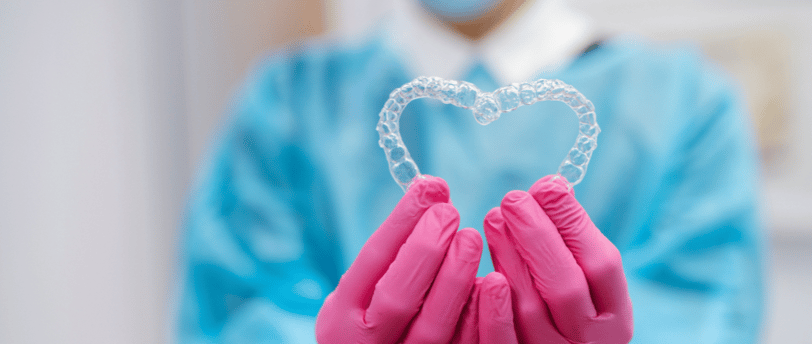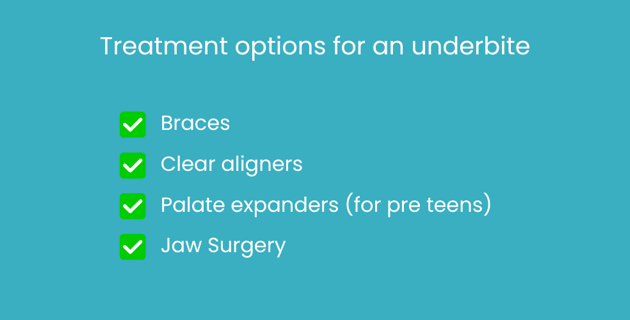Treating An Underbite: What Are My Options?
An underbite does not just affect appearance - it can also cause long-term dental issues. Fixing or correcting an underbite can make a huge difference in how you eat, speak, and smile.
Dr Jessica Yeo
7/7/20254 min read


An underbite does not just affect appearance - it can also cause long-term dental issues. Fixing or correcting an overbite can make a huge difference in how you eat, speak, and smile.
Orthodontics provides a few different options for treating an overbite. While generally not painful, it’s often recommended that an overbite is treated when first identified in children. That being said, it’s also common for adults to undergo treatment for an underbite, if it wasn’t properly addressed at a younger age.
What is an underbite?
An underbite refers to a jaw misalignment where the lower row of teeth sits in front of the upper teeth. In orthodontic terms, an underbite is known as an Class III malocclusion. An underbite can make the lower jaw appear more prominent.
Underbites are common - an estimated 5% to 10% of Australians will have some form of underbite. Some cases of an underbite are barely noticeable, while others are severe enough to cause problems with chewing, function or speaking.
An underbite can generally be treated with orthodontics - whether it be braces, clear aligners, a palate expander and reverse pull headgear, or in severe circumstances, jaw surgery. Before we jump into which treatment is most appropriate and why, let’s look at the effects of leaving an underbite unaddressed.
What causes an underbite?
Underbites can develop for a number of reasons, including genetics, childhood habits, and jaw injuries.
In terms of genetics, underbite traits can be inherited from family members with a history of underbite issues. While it is not guaranteed that someone will develop an underbite if a parent (or both) has an underbite, genetics remains a significant factor.
Childhood habits that place pressure on the teeth and jaw, such as prolonged thumb sucking behaviour can lead to the development of an underbite later on during childhood.
Injuries to the jaw, such as fractures or dislocations, can result in an underbite after recovery. The jaw may not return to the same position as before due to the body’s healing process, resulting in a misalignment that later becomes an underbite.
Issues with an underbite
Chipped and worn teeth
An underbite can cause teeth to inadvertently grind and put more pressure on eachother. This constant pressure wears down the protective surface of enamel faster and increases the likelihood of chipping and worn down teeth.
Difficulty with chewing and speech
An underbite can result in an imprecise bite, causing issues with biting and chewing food, as well as challenges with speaking. Restrictions in how the jaw is aligned can interfere with the normal function of the tongue and lips, affecting pronunciation.
Gum recession
An underbite, combined with misaligned teeth, can be harder to keep teeth clean. An underbite can cause hard-to-reach areas to build-up plaque, even with regular brushing and flossing. Over time, plaque building up can cause tooth decay and gum disease.
If left untreated, an underbite can become progressively worse. What starts as a minor deviation in bite alignment can develop into a more significant problem as you age.
Treatment options for an underbite
The best orthodontic treatment for an underbite depends on age and how severe the underbite is. This is determined with a thorough assessment by a specialist orthodontist to diagnose the cause of your condition and plan for treatment suited to you as an individual.
Palate expander (for pre-teens)
Palate expanders are frequently used in conjunction with braces or reverse pull headgear, and work by expanding the roof of the mouth to help the upper teeth fit over the lower ones. This treatment is only used for children at a pre-teen age as their bones are still growing. Reverse pull headgear is worn at home to apply a forward pull to the upper jaw to guide it into the best possible position before bony maturity.
Braces
Traditional, metal or ceramic braces can treat underbites in both teens and adults. Braces apply constant pressure over time to move the teeth and the jaw into place. While not as discreet as clear aligners, braces can be used to treat more complex underbite issues that aligners cannot.
Clear aligners
Mild to moderate underbites can be treated with clear aligners like Invisalign, where the trays gradually move the teeth into place. Clear aligners are almost invisible and are a popular choice for adults who want a discreet treatment - but are primarily used for more subtle changes in teeth alignment, rather than correcting bite issues.
Jaw surgery
For severe underbite cases, especially those caused by a severe malalignment in jawbone structure, orthognathic surgery may be required. Your specialist orthodontist collaborates with an oral and maxillofacial surgeon to plan the tooth and jaw movements required to The surgical procedure moves the upper and lower jaws into the ideal alignment. Braces are usually worn before and after surgery to fine-tune the teeth position and help lock in the new bite.


How long does it take to correct an underbite?
Early treatment for an underbite with a palate expander can take 12-18 months. Corrections for mild to moderate cases using aligners or braces can take anywhere from 12-24 months. For severe cases, especially those involving surgery, orthodontic treatment can take up to 18-24 months, including pre- and post-surgical orthodontic phases.
The earlier an underbite is diagnosed, the more treatment options will be available. Most orthodontists recommend that children have their first orthodontic evaluation by age 7. This allows underbites to be addressed early on, reducing the severity of the problem in the future.
Glow Orthodontics provides specialised treatment for underbite conditions in children, teens and adults in Sydney. Book an initial consultation with our Sydney orthodontist and specialist, Dr Jessica Yeo, at our Burwood clinic today.
Orthodontic Treatment
Quick Navigation


Locations
